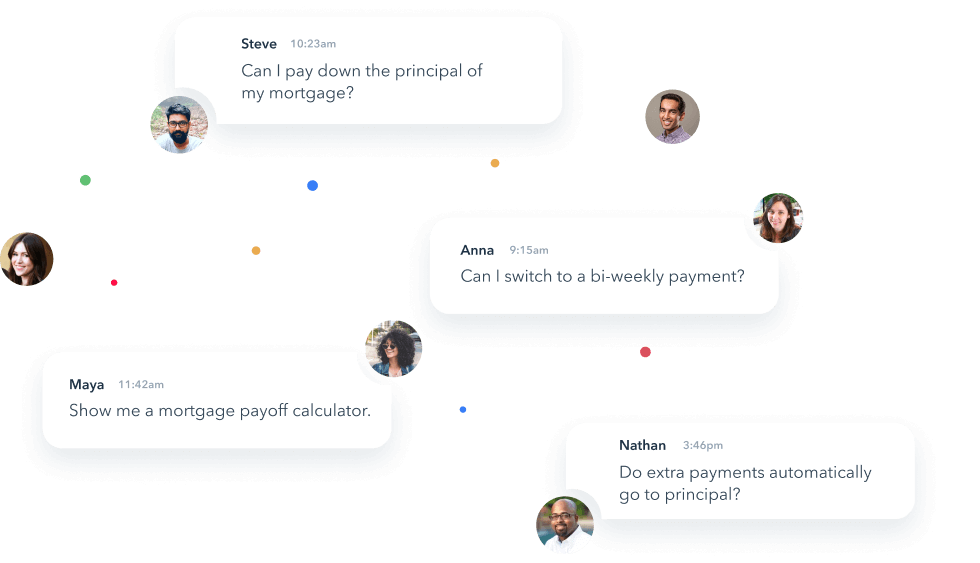After approving someone for a mortgage, lenders need to handle all the administrative tasks that ensure a borrower pays off a loan. Now, the latest AI and automation technology streamlines this process, preventing enormous losses for lenders. In this article, learn how loss mitigation software with AI and automation can help your company.
What is loan servicing?
In loan servicing, the goal of FHA mortgage lenders is to collect the principal, interest, and escrow payments from the borrower. There are several ways they can carry out that recovery, whether that be through a partial claim, REO, or a repayment plan. They can collect interest by holding the loan in their portfolio or selling the loan to another entity in secondary market partnerships. In both cases, the loan terms do not change for borrowers. The only loan modification is where (or to whom) the payment is made.
What is loss mitigation?
Mortgage lenders work to decrease the losses on a loan with loss mitigation modules. To minimize loss, they may select from several options, including forbearance, a repayment plan, a short sale, or a loan modification. Of course, federal regulators restrict how lenders can interact with delinquent borrowers, and every interaction can also involve the loss of money. This process takes a lot of time and paperwork, and includes costs associated with a foreclosure or liquidation. A loss mitigation platform can help.
How do AI and automation better serve the needs of mortgage lenders?
Mortgage lenders can streamline loss mitigation and loan servicing workflows with Capacity‘s user-friendly, AI-powered support automation platform. This loss mitigation solution helps alleviate repetitive manual processes and provides solutions to lenders, underwriters, and borrowers. By speeding up the loan process, lenders can deliver exceptional customer service to potential homeowners.
How can AI and automation help improve mortgage lenders’ customer service?
Capacity features comprehensive chatbot functionality. As part of their dedication to providing the highest quality customer service, lenders and real estate providers can take advantage of automated tools like chatbots, which can respond to repeat borrower requests and simple tasks 24/7. AI support automation features can help with many repetitive tasks, including:
- Appointment setting: Through an automated chatbot, borrowers can request and set up appointments with a loan officer. While chatbots can answer most questions, human workers should handle more complex discussions.
- Quoting: By asking a series of questions, chatbots can provide quotes to borrowers based on their current financial situation and eligibility.
- Status updates: Prospective borrowers and clients can quickly get a status update on their loan with real-time data. Chatbots can provide answers based on user authentication and permissions, to ensure the right information gets into the right hands.
Servicing questions: Over 90% of all questions can be answered without human involvement through a support automation platform. More complicated questions from this servicing system can seamlessly escalate to a human via a ticket or a live chat for improved customer retention.

What is forbearance, and how does it work with AI and automation?
AI and automation are important considerations when it comes to forbearance. As borrowers experience financial hardships, they need configurable forbearance, which can be a lengthy and complicated process. Mortgage lenders can expedite forbearance proceedings by automating the request and verification process. This process allows lenders to deploy forbearance activities without the hassle.
Instead of waiting months, borrowers can initiate the forbearance process themselves with intelligent document processing through an automated workflow, eliminating the middleman. By initiating the process themselves, the borrower minimizes human error factors, which would have normally contributed to extended wait time and frustration.
Intelligent document processing helps ensure a positive customer experience for borrowers while allowing lenders to focus their time and effort on more important tasks. It’s a win-win situation that provides benefits to the borrower and the lender in their joint efforts to decide the best options for possible forbearance and to achieve the best possible path toward ensuring that the loan stays in good standing even through times of hardship.
What is default, and how do AI and automation help the default process?
Default is the failure of borrowers to fulfill an obligation. It’s an expected part of the loss mitigation process, but it can still cause significant disruption for lenders. That’s where support automation comes in. Lenders and mortgage servicers can use support automation to review and assess multiple data sources to determine the risk factor for each borrower.
In other words, the lender can gather evidence that might suggest a default even before the borrower is aware that it might be a possibility. With that level of detailed analysis, lenders can better prepare for possible risk variables and improve workflow management. Based on the borrower’s history and current financial situation, they can also respond to forbearance requests as appropriate.
How can Capacity help?
Request a demo to learn more about how our industry-leading support automation platform. Discover how our loan origination and loss mitigation software can help you achieve success and the best customer experience with features like configurable dashboards.


